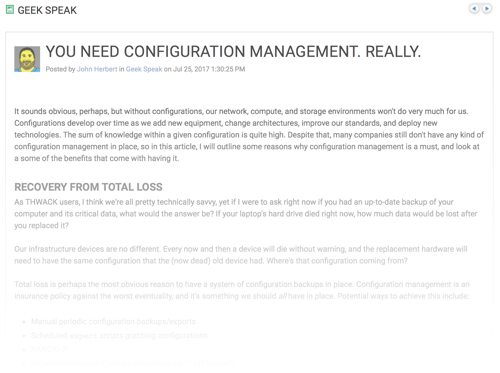Dell EMC Adds Data Protection to HCI Appliances Running Microsoft Hyper-V
 Dell EMC also partners with VMware and Nutanix on its HCI portfolio.
Dell EMC also partners with VMware and Nutanix on its HCI portfolio.
Real-time visibility and control of campus networks
Many of the examples on this blog describe network visibility driven control of data center networks. However, campus networks face many similar challenges and the availability of industry standard sFlow telemetry and RESTful control APIs in campus switches make it possible to apply feedback control.HPE Aruba has an extensive selection of campus switches that combine programmatic control via a REST API with hardware sFlow support:
- Aruba 2530
- Aruba 2540
- Aruba 2620
- Aruba 2930F
- Aruba 2930M
- Aruba 3810
- Aruba 5400R
- Aruba 8400
Typically, a small number of hosts are responsible for the majority of traffic on the network: identifying those hosts, and applying controls to their traffic to prevent them from unfairly dominating, ensures fair access to all users.
Peer-to-peer protocols (P2P) pose some unique challenges:
- P2P protocols make use of very large numbers of connections in order to quickly transfer data. The large number of connections allows a P2P user to obtain a disproportionate amount of network bandwidth; even a small number of P2P users (less than 0.5% of users) can consume over 90% of the network bandwidth.
- P2P protocols (and users) are very good Continue reading
LogicMonitor Extends Monitoring Capabilities to the Cloud
 The software helps customers formulate a cloud strategy.
The software helps customers formulate a cloud strategy.
Scality Bridges the Microsoft, Amazon Cloud Storage Divide
 Scality Direct is also available in a stateless version for hosting on a VM within Azure.
Scality Direct is also available in a stateless version for hosting on a VM within Azure.
History Of Networking – Tony Li – BGP
Tony Li has had a distinguished career working as a networking software architect at some of the largest networking vendors in the world. In this episode of Network Collective, Tony joins us to discuss his involvement in the creation and implementation of BGP, the routing protocol that enables the Internet.
Links, FYI:
The image above is a capture of the original BGP design, sketched on two napkins by Kirk Lougheed of Cisco and Yakov Rekhter of IBM in 1989.
Outro Music:
Danger Storm Kevin MacLeod (incompetech.com)
Licensed under Creative Commons: By Attribution 3.0 License
http://creativecommons.org/licenses/by/3.0/
The post History Of Networking – Tony Li – BGP appeared first on Network Collective.
History Of Networking – Tony Li – BGP
Tony Li has had a distinguished career working as a networking software architect at some of the largest networking vendors in the world. In this episode of Network Collective, Tony joins us to discuss his involvement in the creation and implementation of BGP, the routing protocol that enables the Internet.
Links, FYI:
The image above is a capture of the original BGP design, sketched on two napkins by Kirk Lougheed of Cisco and Yakov Rekhter of IBM in 1989.
Outro Music:
Danger Storm Kevin MacLeod (incompetech.com)
Licensed under Creative Commons: By Attribution 3.0 License
http://creativecommons.org/licenses/by/3.0/
The post History Of Networking – Tony Li – BGP appeared first on Network Collective.
Datanauts 103: Azure Infrastructure And PowerShell At Microsoft Ignite
Chris Wahl records a live Datanauts at Microsoft Ignite to talk Azure, Azure Stack, PowerShell and more with Microsoft Technical Fellow Jeffrey Snover. The post Datanauts 103: Azure Infrastructure And PowerShell At Microsoft Ignite appeared first on Packet Pushers.Response: Cisco ASA Firewall breaks after 213 days of uptime
Continuing with my theme of paying premium prices for faulty products, Michael McNamara shares a recent experience: I just recently had two HA pairs of Cisco ASA firewalls just stop communicating. A reboot of both the primary and secondary firewall in each HA pair resolved the problem. I had never observed such odd behavior from […]
The post Response: Cisco ASA Firewall breaks after 213 days of uptime appeared first on EtherealMind.
SAP Cloud Is Embracing the Open Source World
 The company joined CNCF and the Open API Initiative.
The company joined CNCF and the Open API Initiative.
You Need Configuration Management. Really. (Thwack)
Oops, lost a network device. I sure hope we have a configuration backup…
On the Solarwinds Thwack Geek Speak blog I looked at how configuration management can help not just with total loss scenarios, but also with audit and compliance issue. Please do take a trip to Thwack and check out my post, “You Need Configuration Management. Really“.
Please see my Disclosures page for more information about my role as a Solarwinds Ambassador.
If you liked this post, please do click through to the source at You Need Configuration Management. Really. (Thwack) and give me a share/like. Thank you!
Bin Packing Problem of Distributed Traffic Engineering
Bin Packing Problem ? What is Bin Packing ? I will explain in this post Bin Packing Problem in MPLS Traffic Engineering. Very complex post normally but I will make it simple for you. And trust me, it is important to understand. Before I start explaining Bin Packing problem, let’s just […]
The post Bin Packing Problem of Distributed Traffic Engineering appeared first on Cisco Network Design and Architecture | CCDE Bootcamp | orhanergun.net.
What is IRU ? Indefeasible Right of Use ?
What is IRU (a.k.a Indefeasible Right of Use) ? If you are working in the Operator, Service Provider or Telco/Carrier networks, you probably heard this term. If you haven’t, you need to learn it. Note: This content is received from my Telecom/Service Provider Course. You can join the course and learn much more about […]
The post What is IRU ? Indefeasible Right of Use ? appeared first on Cisco Network Design and Architecture | CCDE Bootcamp | orhanergun.net.
Introducing Cloudflare Stream: Fixing the Streaming Video Market

Cloudflare turns seven years old today. We launched on September 27, 2010.
It was only a few days after our launch that we got our first request to support video streaming. Yet, until today, we'd avoided it.
Why? Simply put: the video streaming market is screwed up. While there's a lot of money spent on video, there are only really about 1,000 customers that do any meaningful level of streaming.
This is in large part because it's technically far too complicated. If you want to move beyond just uploading your videos to a consumer service like YouTube, then you have to use at least three different services. You need someone to encode your video into a streamable format, you need someone else to act as the content delivery network delivering the bytes, and you need someone else still to provide the player code that runs on the client device. Further, since video encoding standards keep evolving and vary across generations of devices, it becomes challenging to ensure a consistently high quality experience for all visitors.
And if that sounds like a technical mess, the business side is even worse. Encoding companies charge based on CPU usage, which is driven by Continue reading
How Cloudflare Streams

Every day, close to 1 billion people watch video through Cloudflare. That’s 100 petabytes of video every month. Last year, video made up 73% of all internet traffic, which is why earlier today we announced Cloudflare Stream, an end to end video solution designed to bring instant video to any device and network connection. Here’s how Stream works to optimize video upload, encoding and delivery.
Uploads
Using Cloudflare Stream starts with a call to the Stream API to /upload a video.
HTTP does not by default provide a reliable upload mechanism for large files, which can make it tricky to upload large media content like high quality video. If there’s any latency in the network connection, a timeout can cancel the entire upload and require the client to start over.
We use an open source upload protocol called Tus which allows for resumable uploads where the upload previously failed. Tus does this by splitting the download into manageable chunks and tracking completed chunks on the server.
Encodes
Video files are containers that hold the video file, the audio track, and some metadata. The video file is compressed by a codec. The codec is a compression algorithm for encoding video Continue reading




